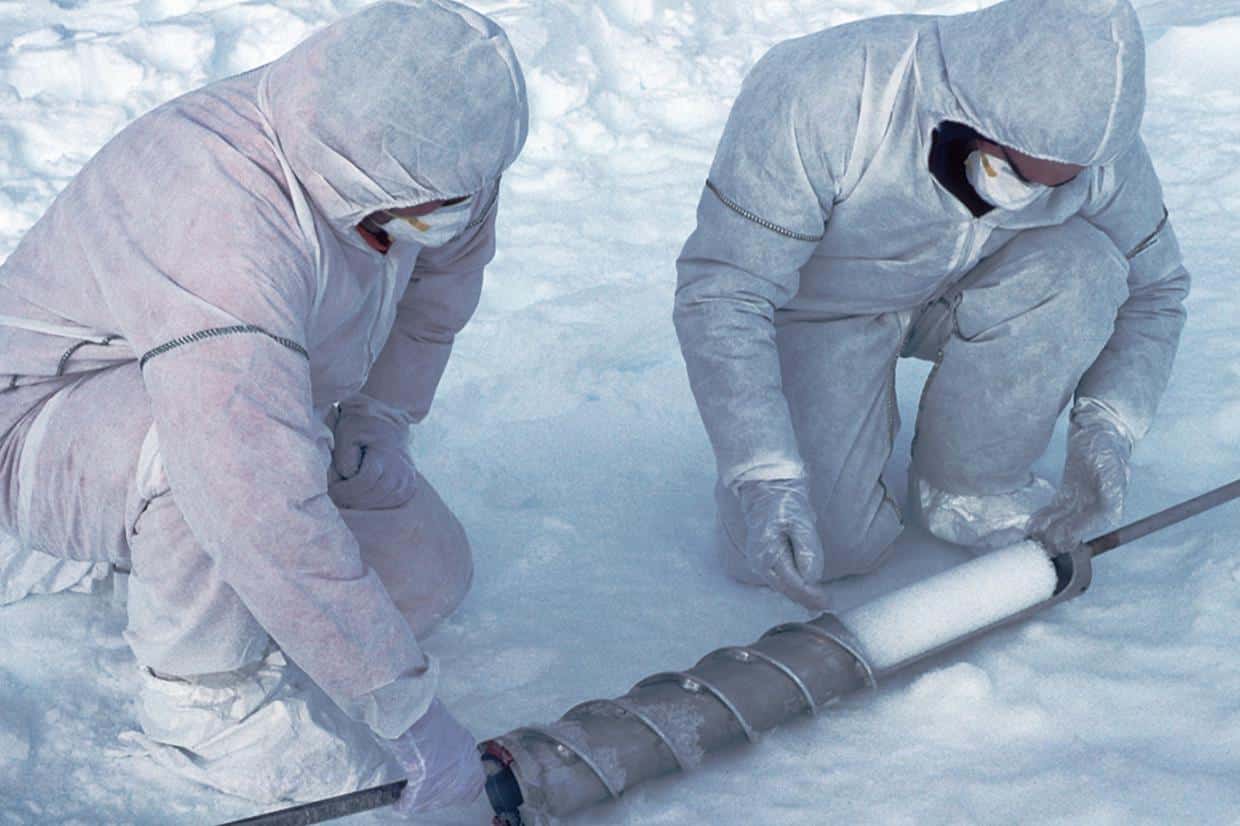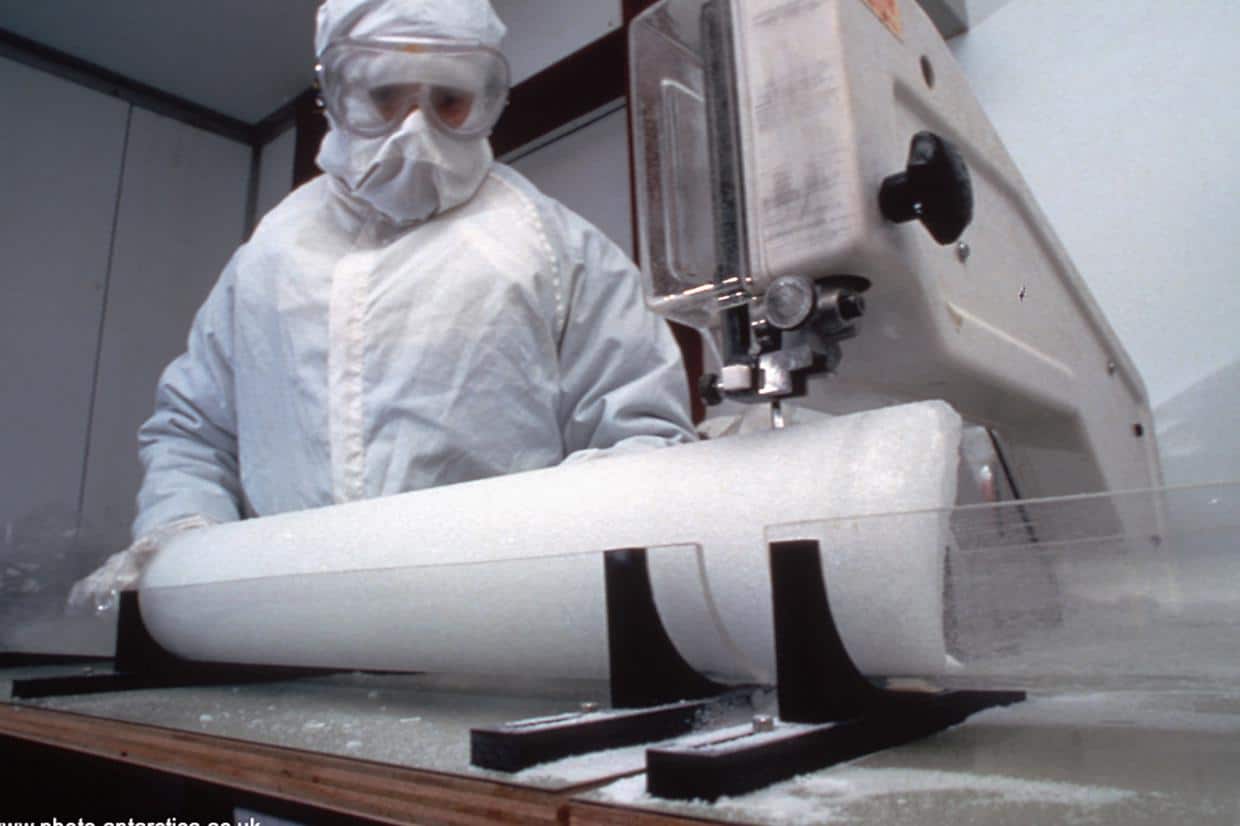
The climate of the past
By drilling a hollow tube thousands of metres into the Antarctic ice, scientists can pull out samples of ice known as ice cores that are layers of ice which have been buried for thousands of years.
Ice cores
Each layer of an ice core represents a particular point in time, just like a time capsule. The layers contain pockets of ancient air sealed in tiny bubbles that show different concentrations of gases. By studying the archive of gases in the trapped air, scientists can get a very good idea of what the air quality and climate was like up 1.5 million years ago. They may even find clues about future changes that could affect us all.
Click here to download a Word file containing the information from the ice cores
Today:
By measuring carbon dioxide concentrations trapped in the ice, scientists now know carbon dioxide concentrations today are the highest for 650,000 years. Scientists have linked these higher concentrations with higher temperatures, suggesting global warming.
2000s:
After an all-time high in the 1980s, samples of ice from recent years show a drop in lead concentrations in the ice. This shows the impact of the worldwide introduction of lead-free petrol.
1960s:
Ice layers show a drop in the amount of radioactive gases in the ice following the ban on testing atomic bombs in 1963.
1800s:
Higher concentrations of carbon dioxide and nitrous oxides trapped in the ice mark the beginning of the Industrial Revolution and the burning of fossil fuels in power stations, factories and cars.
1400s:
Temperature is not the only climate variable that Antarctica’s ice cores can record. They can also record changes to windiness and storminess. In the 1400s there was a spike in the sodium recorded in the ice which was marking at time when the seas surrounding Antarctica were stormier and were throwing up salt onto the ice.
12,000 years ago:
About 12,000 years ago the ice cores recorded a very rapid change to cooler temperatures. The ice cores showed that these temperature decreases happened over only a few hundred years showing that climate changes were much faster than previously thought.
73,000 years ago:
Antarctica’s ice cores are also very good at recording dust and ash particles. About 73,000 years ago Antarctica’s ice core showed evidence of a huge volcanic eruption from Indonesia. The dust and ash particles got so high that some even landed on Antarctica’s surface and are now locked up in the ice core records.
900,000 years ago:
From one of the deepest ice core samples ever extracted, scientists have confirmed that in the last 900,000 years, Earth has been through eight separate Ice Ages (or glacial periods shown in blue), when the climate was much colder than today.









